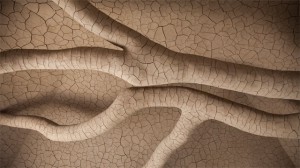Over the last five years a series of sculptures by British artist Andy Goldsworthy have appeared in various sites around the Presidio, the expansive former military base adjacent to the Golden Gate Bridge. Spire (2008) makes use of thirty-seven felled Monterey Cypress trees in an architectural formation reminiscent of great church spires. Wood Line (2008) repurposes eucalyptus branch trimmings sourced from various projects that required tree removal, including the recent reconstruction of the Golden Gate Bridge’s southern approach, to create a winding sculpture on the Presidio’s oldest foot path, known to many as Lover’s Lane.
Each project follows in the long tradition of Goldsworthy’s work, which primarily repurposes natural elements to engender a greater consideration of both the natural and the built environment. His latest installation Tree Fall (2013) debuted last month. While it is an obvious continuation on earlier themes, its placement in the former Civil War-era Powder Magazine on the Main Post offers provocative new possibilities in considering how man-made conditions collide with nature.
It must first be said that this work is both very much in keeping with the artist’s larger body of work and simultaneously radically different from past approaches. The Powder Magazine is a small, discreet building positioned on the far end of a large green belt surrounded by intersecting streets and parking lots, east of the Main Parade Ground. Its original function was to house gunpowder and munitions — the walls are four-feet thick stone slabs, while the doomed ceiling was built to channel accidental explosions upwards to protect people and neighboring buildings. Tree Fall occupies this domed ceiling and the viewer is immediately positioned beneath the work upon entry, a literal allusion to the artist’s ongoing inquiry about what goes on beneath the surface of things.

Andy Goldsworthy, Tree Fall (2013), installation view; photo: JanStürmann/FOR-SITE Foundation
An enormous tree trunk, sourced after removal during the Presidio Parkway project, is suspended across the width of the ceiling. Both the ceiling and the root are encased in dense layers of clay sourced from the Presidio. As it air-dried, a wide crackling pattern formed over the surface of the several thousand pounds of clay used to cover the bough and ceiling, creating a subtly beautiful surface evocative of both destruction and renewal.


